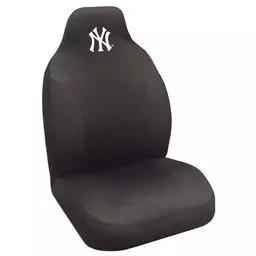![]()
How To Rack The Balls
Balls are racked differently according to the game being played.
- Eight-Ball - The object balls are divided into two groups: the stripes and the solids. The eight-ball is racked at the center of the triangle (in the third row) and one ball from each group is racked at each of the rear corners.
- Nine-Ball - The balls are racked in a diamond pattern with the one-ball on the foot spot and the nine-ball in the center of the diamond. When the five-ball is used as the money ball, it is racked at the rear of the diamond.
- Straight Pool (aka 14.1) - The triangle is arranged with the one-ball at the right rear, the five-ball at the left rear and the others at random.
- Cut-Throat (aka Elimination) - The one-ball is placed at the foot spot and the six and eleven balls are placed in the corners.
Beginner Level Tips
The first thing to achieve is consistency in your stroke. If you are not able to hit where you're aiming at, you can't identify or correct problems in your game. Practice on a straight and smooth stroke and keep improving it.
Try to develop a pre-shot routine that ensures you have the same line up every time, presenting a consistent sight picture to your brain. Always line up your eyes with the intended cue ball path before getting down to shoot.
How you stand depends on your body and it will be different for everyone, but watch for these 3 basic points (assuming you shoot right handed)
- The angle between your upper and lower arm should be 90 degrees, when the cue tip touches the cue ball
- Your right foot should be directly below your right hand
- The bridge hand, the right shoulder and your right wrist should be in the same vertical plane throughout the stroke
One of our members writes: "I think everything is very good information, except one little thing- telling people to always have their tips dive down into the cloth on the follow thru...that is about the worst advice that you can give anyone who would wish to become a good pool player. This causes the balls to skid; you cannot achieve a 'clean' hit when you do this. The tip should always be parallel to the cloth. While some phony BCA instructors like to teach that your tip should dive down, they are full of themselves. No professional players do it. It is ok to drop your elbow slightly - that is a natural part of the stroke. Look at all the top players today; nobody lets their tip dive down. They all drop their elbows. If EVERY pro does it, there has to be something correct about it."
Whether you keep your elbow up or down, make sure that you develop a style that is comfortable to you.
Don't stop your stroke prematurely, allow the cue to follow through. This is important!
Avoid using side spin as a beginner. It's easier to detect flaws in your aim or stroke without all the 'side effects'.
Keep your cue as level as possible, even when the cue ball is very close to the rail. An elevated cue will cause a curved cue ball path.
Try to play with well maintained equipment and get your own cue if you play regularly, it's worth it. A good stick shouldn't cost you more then $300, often less. You can pay more later for inlay decoration, there is no limit.
Chalk your cue tip before every shot. Make sure you apply chalk to the outer part of the tip.
Your back swing should be slow, even on harder shots. Accelerate the cue smoothly in the forward motion.
Intermediate Level Tips
At this stage you should be comfortable to make 'easy' shots. It's time to start planning your game, playing for position. You should try to plan at least one or to two shots ahead.
Don't get carried away. You will notice that you miss more when you play for position. The key to get past this stage is to divide your shooting in stages. Get a clear idea of the cue ball position you want after the shot and how you get there BEFORE you go down to shoot. Decide on necessary spin (tip position) and speed, then just execute. Don't move! Finish your stroke as smoothly as always, you can see the result of your shot early enough.
As a beginner you probably played 8-Ball most of the time. Now try 9-Ball and if possible some straight pool. All three games have different challenges that will add to your skill arsenal. 9-Ball will improve your long distance shots and rail position play, straight pool will improve your touch and pattern play. Straight pool is the most difficult to master, but no matter how good you get, it's a great practice game.
Usually people play, then they play more and advance quickly. But then they don't improve anymore. They have good days and bad days, but the average is fairly stable. To improve further you have to practice, alone or with someone else. Maybe you can get some lessons from an advanced player or an instructor. It's well worth it, if you can find the right person for yourself.
Check back on your basics. You might have developed some habits over time that are causing you problems. Check the following:
- Freeze after the shot and see if your tip moved way past the cue ball position (did you follow through?). Also, does you cue point straight to the target or does it move to the left or right in the end?
- Your tip should dive down toward the table after hitting the cue ball on a correct stroke, if it points parallel to the table or even upward, you are probably dropping your elbow at the end of the stroke. This will cause problems with lengthy draw shots and can cause inconsistency in your tip position.
- Check your grip. It should be as loose as possible. Imagine the grip you would use to hold a bird with your hand. That's about the same way you should grip your cue.
Try to play against stronger players, you will learn from them and you're forced to play your best to have at least a chance. When playing weaker opponents, try not to judge your game quality just by winning or loosing, rather try to play the table on your best level.
When you have the chance to watch some professional players, do it! You will be amazed what can be done on a pool table and you will get tons of new ideas. You will learn new techniques and most important you will learn that they never give up.
I take it you are able to make a couple of shots in a well planned sequence.
Are you missing your key balls (the eight, the nine, or that one last difficult shot before an easy run out)? This is more a mental problem then anything else. Next time you miss a shot like this, try to remember what you were thinking just before you made that shot. Probably you had all kinds of thoughts in your head. Point here is: Get them out of your head BEFORE you shoot. The pressure is even stronger in competition or money games. Imagine the final of a 2 day tournament. You only need the last game to be the winner. You are focused and shooting well, you manage to get into position for a simple stop shot, leaving you a dead easy straight shot on the eight ball. But! You screwed up that stop shot by 2 inches. You know it wasn't difficult and you also know that you usually don't miss by that much. You choked! To deal with this, you have to learn when it happens to you. If you learn to be ware of the times your concentration starts to slip away you can learn to get back into it. Typical signs are that your rush your shot (you want to get rid of the pressure asap), your head fills with thoughts about the past or future, instead of being focused on the present. If this happens, stop! Relax, take a couple of deep breaths and allow yourself to calm down. Then use your routine and approach the table again. Make sure you head is free from any distracting thoughts and execute your shot.
Time to practice more. You say you can't practice more? Well, did you really practice? What did you practice? You can get more practice just by making your practice time more efficient. That is, don't practice what you're doing well, practice the shots that you miss frequently or shots that you try to avoid in your runs because you are afraid of them. This is hard, it's frustrating. But it will help you to improve your week points. This is far more important (and in the end easier to achieve) then moving your 98% shots up to 100%. Practice your weakest shots and be persistent. You will be rewarded in the next game were you suddenly make that shot that would otherwise have cost you the game.
If you run out of ideas, try some other sources, e.g., videos. There is plenty of material available, from basic instructional tapes to professional matches. Both might help you, watching a professional player do things right, even without knowing how exactly he is doing it will put you in the proper mind set next time you are on the table. Learning by imitation is fundamental to any activity.
Without improving your own shot making skills, you can usually improve your percentage of wins by incorporating defensive play in your game. Study your opponent, find out his weak shots. Play a safety when you think you might miss. Never give a shot away. If you missed your intended cue ball position and can't continue your run, don't just shoot at anything. Either play a safety or at least prepare your game. Find a ball that is in a bad position for you and try to move it in a better one. It might make the difference between winning and loosing, if you get back to the table.


